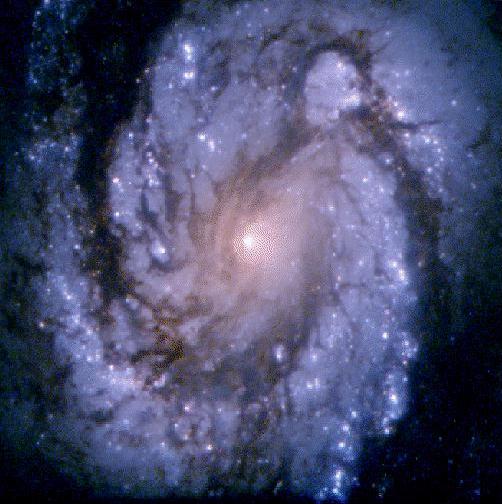
M100. Type Sc. Hubble Space Telescope view.

M100.
Type Sc. Hubble Space Telescope view.
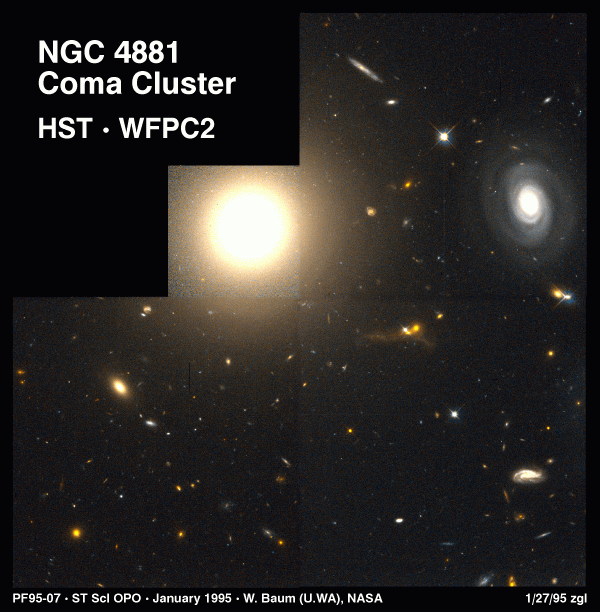
NGC
4881 is the elliptical galaxy at center.

M31
(Messier 31, NGC 221, or "The Andromeda Galaxy") is Sb. M32
to the south is E1, NGC 205 to the northwest is S0 or E7. Both small
galaxies orbit around the much larger M31.
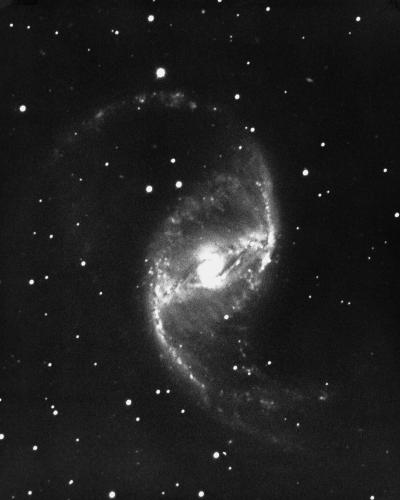
NGC
1530, SBb.

M
104 - Sombrero galaxy. Sa.
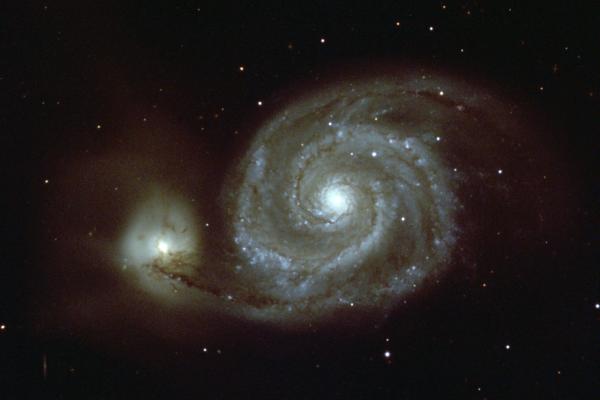
M
51 - whirlpool galaxy. Sc, with companion to the left often
classified S0.
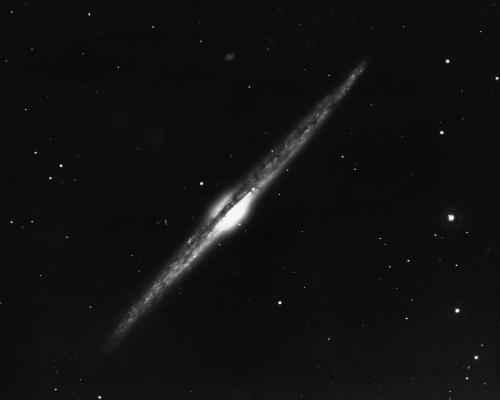
NGC
4565, an Sb galaxy seen edge-on.

NGC
4622, a "grand design spiral," type Sb.
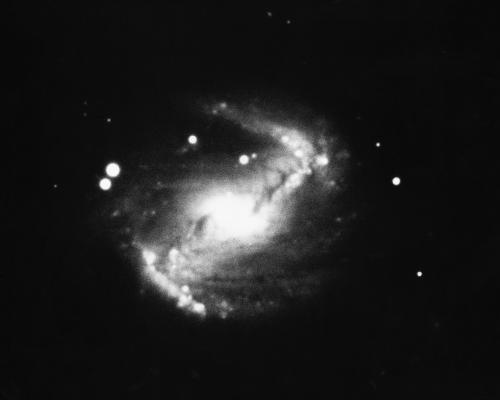
NGC
5383, type SBa.
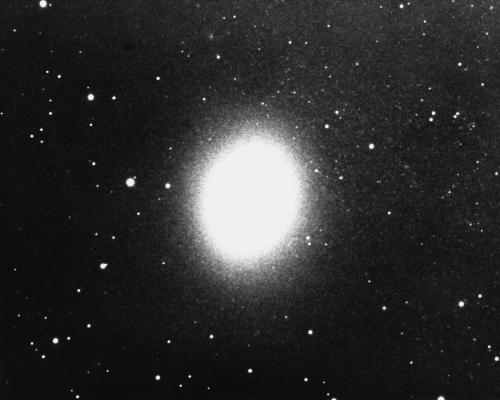
M32,
type E1.

M74,
or NGC 628, type Sc.

M49,
type E2.
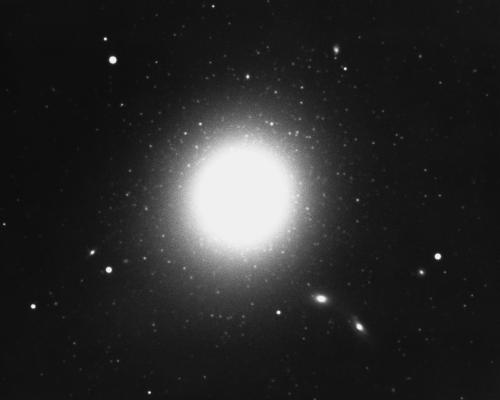
M87,
type E0. Alternate view.

Sextans
A, dwarf Irregular galaxy.
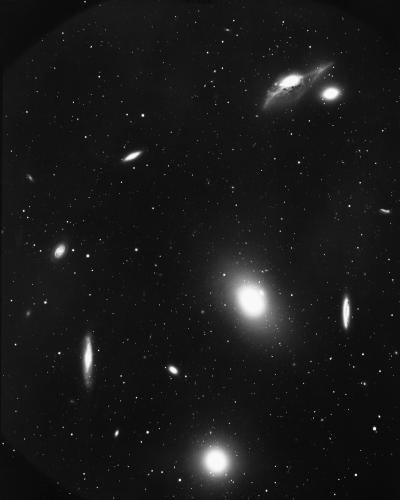
Center
of the Virgo cluster of galaxies. (V=1300 km/s)
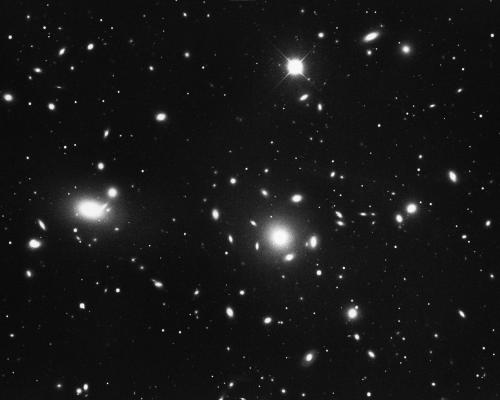
Center
of the Coma cluster of galaxies. (V=6000 km/s)
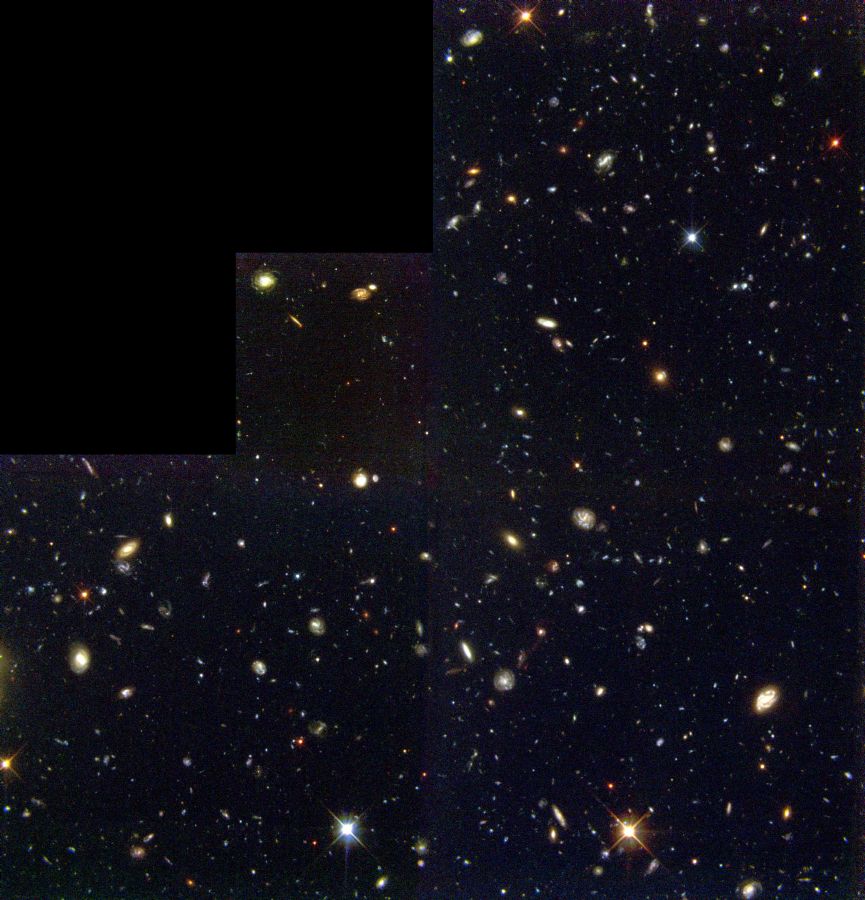
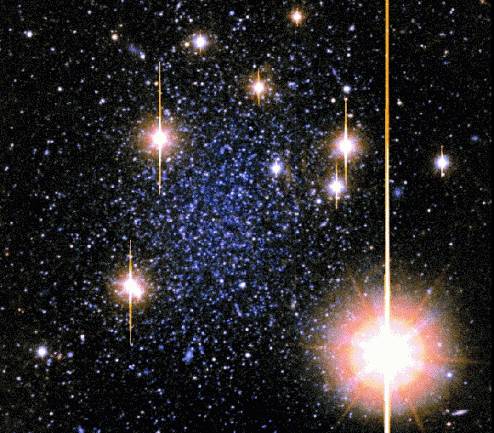
Pegasus
dwarf spheroidal. Very bright stars are nearby stars within the Milky
Way.
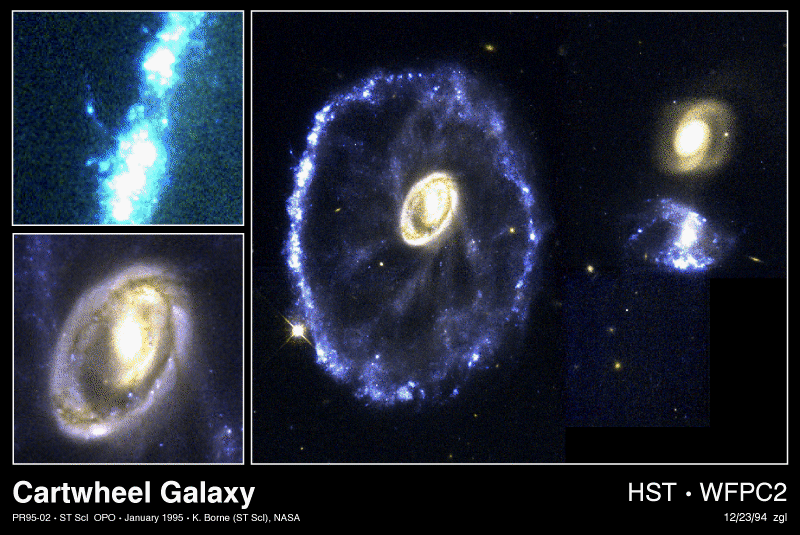
The
"Cartwheel galaxy" is a product of a just-passing-through
collision between the cartwheel and one of the two galaxies to the
right (we don't know which). The collision caused a ring-like shock
wave to travel outwards through the galaxy.
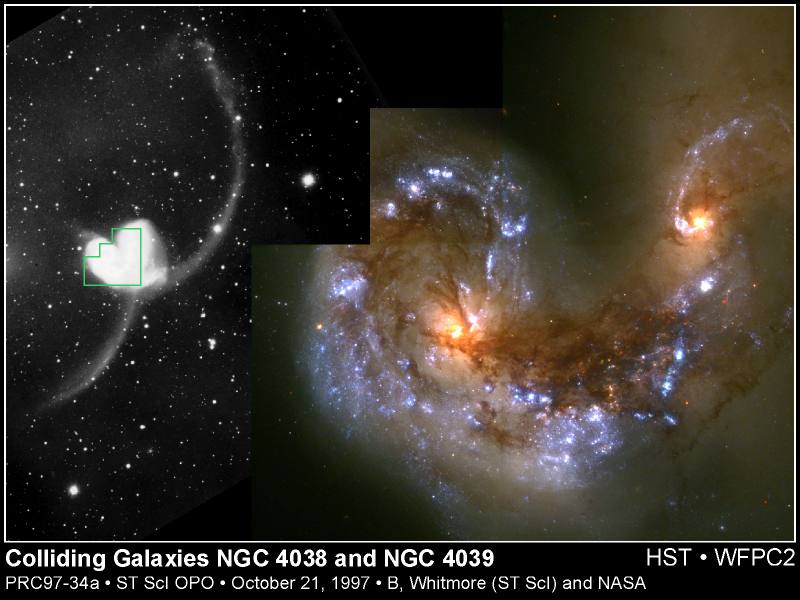
"The
Antennae" is an early-stage merger between two spiral galaxies.
They will eventually merge to form one galaxy of type E, S0, or
perhaps Sa.
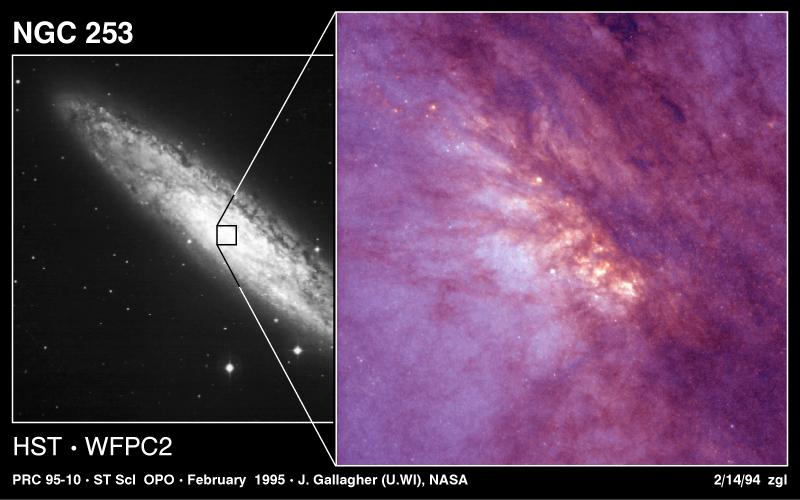
NGC
253 is full of dust and gas and is rapidly turning itself into stars.
Such galaxies are called starburst galaxies.
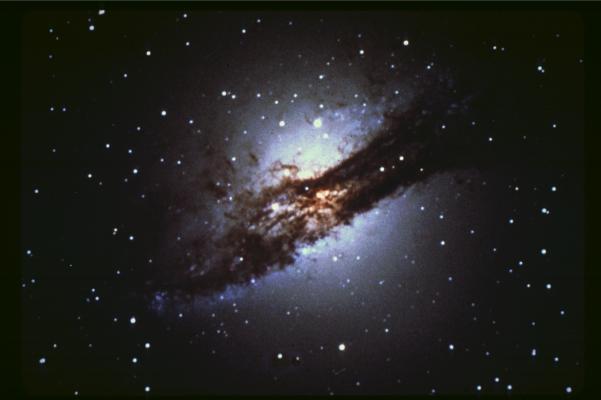
Centaurus
A, classified E-peculiar. Another
view.